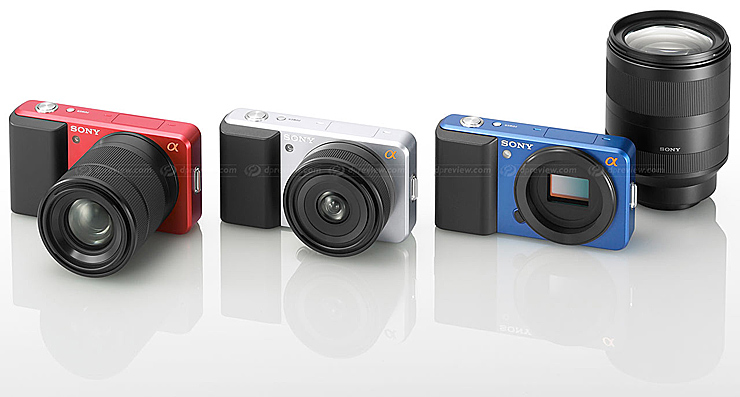
On Sunday, DPReview.com syndicated Sony’s announcement at PMA of a new line of mirror-less, interchangeable-lens compact cameras using a proprietary lens mount. But who cares?
Camera Design of the Future?
For owners of 35mm SLR cameras, the idea of owning a camera that does not allow you to see through the lens–directly through the optics–seems strange. It seems a throwback to the days of the rangefinder. Of course, if that was truly the case that no one would want it, then why would Leica, let alone is M9 35mm digital rangefinder, still exist?
The answer, to put it succinctly, is that these smaller cameras with their smaller, but quite fine lenses, bring the fun back into photography.
And with no mirror in the way (electronic viewfinders are getting astonishingly good, and you can have a live preview of what the histogram will be at your given exposure), the lenses can be reduced in size dramatically. Ever wonder why a 35mm Leica lens looks so different from one from Canon? Single-lens-reflect requires a retrofocus design to compensate for the distance between the end of the lens and the film plane. While this is over-simplified, the shorter that distance between film plane and lens, the smaller (and lighter!) the lens can be.

For over a year now I’ve been working with a Panasonic Lumix G1–you can see all the photos I’ve posted with it–and along with its standard lens, a telephoto zoom, and an Olympus pancake lens that I’ve borrowed on occasion, it has enabled me to make pictures that I wouldn’t otherwise have because I don’t always want to schlep along my 5D Mk. II and 24-70 f/2.8L lens.
The G1 and its 14-45mm lens weigh in at one pound, six ounces. The 5D and 24-70 weigh four pounds, five ounces. Is the quality the same? Of course not. But I wouldn’t have had the images without the lighter camera, because I don’t want to have bad knees and shoulders because of camera gear. A bird in the hand…
The quality issue is one that should be addressed in future updates to the concept of a mirror-less camera.
The past few months have seen the introduction of the second Olympus PEN, the EP-2, as well as a beginning model EP-L1. Panasonic has produced more lenses, including two that I currently covet, the 20mm f/1.7 pancake, and the 7-14mm wide-angle zoom. Olympus is supposed to come out with their own 14-150mm soon. Micro four-thirds is heating up.
While it’s true that the Sony cameras will use a different mount, it will be interesting to see what other lenses they offer and how the cameras perform at higher ISO’s. Lastly, it’s interesting that Samsung has also developed its own mirror-less camera with a more traditional “SLR shape,” the NX-10.
